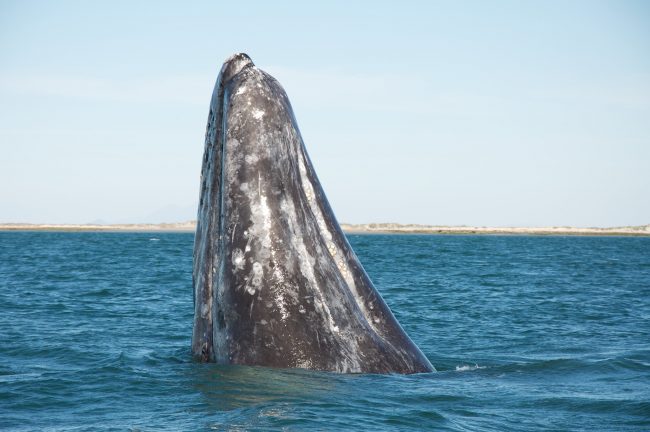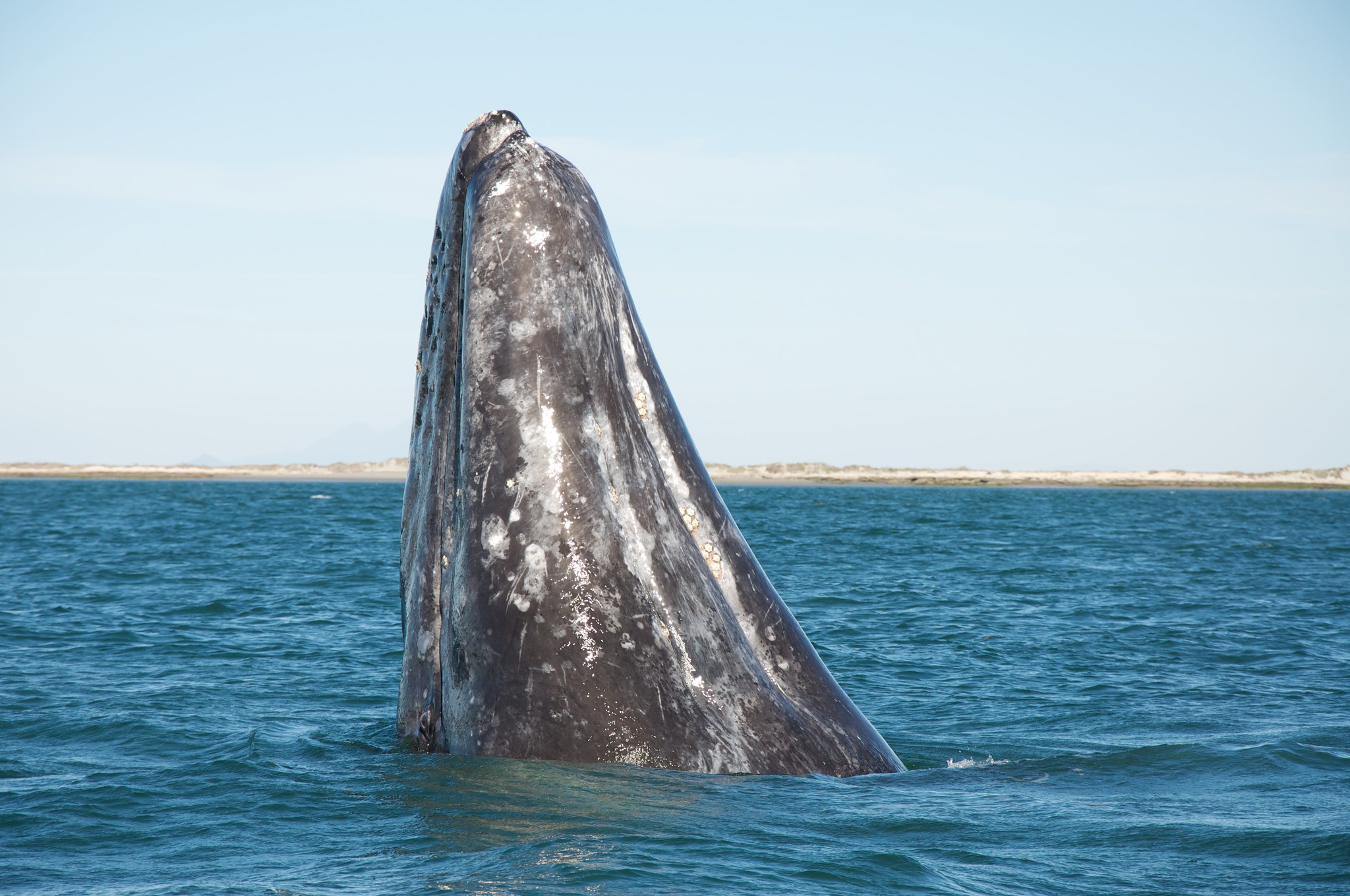|
Getting your Trinity Audio player ready...
|

One-hundred-twenty-one gray whales were killed in the spring and summer of 2109, and scientists are scrambling to learn what it was that killed them.
The whales washed up on West Coast beaches as they finished their annual migration to their winter feeding grounds between Alaska and Russia. Many of the giants of the ocean were emaciated and seemed to be starving.
The death count, tallied the week of Sept. 15, makes this the second-worst year on record for the gray whales. In the late 1800s, they were hunted to near extinction. The current death rate could represent as much as 10 percent of the total population of the species.
Megan Ferguson, a fisheries biologist with the Cetacean Assessment and Ecology Program of the National Marine Fisheries Service, stated, “I wouldn’t be surprised if our team comes across other carcasses.”
Ferguson and her team are flying aerial surveys out of Deadhorse, Alaska. They are observing whales in their feeding grounds in the Bering and Chukchi areas.
They are assessing the condition of the whales’ bodies through photography.
Once before, in 2000, scientist saw a large number of gray whales die during their long migration. That year, 131 whales washed up on shores from California to Alaska.
Teams of scientists are working together to understand why so many of these ocean mammals have been found dead. Additionally, they are struggling to learn what it means for the species as a whole.
“Your immediate tendency is to look at the food supply, because of the fact that so many are emaciated. But we don’t know enough to be able to say what the cause is yet,” according to John Calambokidis, a cetacean expert with Cascadia Research in Olympia, Washington, a nonprofit organization that focuses on whale research.
The first whales washed up on the West Coast in the spring. So many were dying, that at the end of May, the National Oceanic and Atmospheric Administration said it was an “unusual mortality event” and launched an investigation.
Researchers have been collecting data for three months, performing necropsies on the whale corpses and observing them as they arrive in the Alaskan waters. Only a few things are certain. The whales that have died were mostly thin of emaciated. Living whales have swum into areas they do not normally visit on their way up the coast, possibly looking for food. There are more juvenile whales dying than usual during the journey.
The investigation includes dozens of scientists from Mexico, the U.S., and Canada. All of them are working together to solve the mystery.
The whale’s Arctic feeding grounds have been experiencing some changes, including warmer water temperatures and a 30 percent decline in sea ice. These changes could affect the tiny sea creatures the whales eat, so it is possible the whales have not been able to find enough food last summer before they began their 5,000-mile migration. The whales could have starved to death before they were able to find more food.
Ferguson said, “We’re seeing a shift in timing and distribution of where they forage for food.”
Scientists do not have the data to tie the whale deaths definitively to the changes in the areas where the whales and their prey swim, according to Calambokidis.
It is also possible that the gray population is the highest it has been since whaling ended in the 1940s. There could be too many whales for the food that is available.
It is not known whether there were similar die-off events before whaling began and whether this is part of a natural population cycle or if it is a new event. Researchers do not know what the original gray whale population was before they were hunted for their blubber.
Scientists took tissue samples from as many of the dead whales as they could to be studied for toxins, pathogens, and illnesses. Currently, there is no indication any of those are the cause of the deaths, but the majority of the past two months was used to collect samples as the whales were dying. Therefore, a thorough analysis is only beginning.
By Jeanette Smith
USA Today: Something killed 121 gray whales this summer. Scientists are scrambling to find out what
WSB Atlanta: Increase in dead, dying marine life on West Coast beaches linked to climate change, vet says
NPR: Why Are Gray Whales Dying? Researchers Cut Through The Blubber for Answers
Image Courtesy of Sam Beebe’s Flickr Page – Creative Commons License



